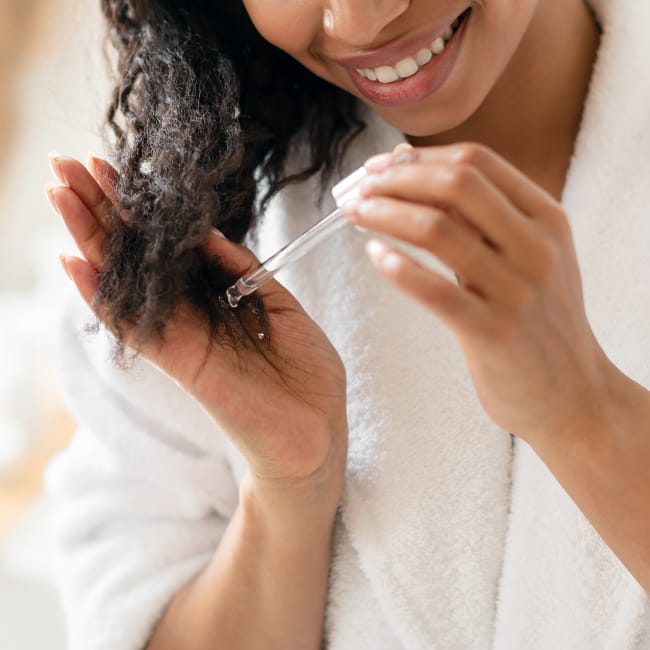Most of us are familiar with hair shedding. We may experience it at different times of life, such as postpartum, perimenopause, and menopause. We can experience it as the result of stress, illness, and certain medications. But there’s a difference between common shedding and over-the-top shedding, and you’ll know when it’s the latter. If you’re stressing out because clumps of hair are falling out in your hands, you may be more eager to find as many solutions as you can so that you can treat hair loss with a multifaceted approach.
@skinbydrazi Hair loss is devastating but there are effective solutions #hairloss #hairlosssolutions #hairgrowthtips #hairtok #skinbydrazi
One board-certified dermatologist shares “effective solutions” for hair loss that can prevent follicles from “shrinking” and stimulate “new hair growth.” Here are four approaches to consider trying — but it’s always a good idea to talk to your dermatologist before starting a new regimen.


1. Vitamin Supplements
Before you purchase expensive serums and products or book an appointment with your dermatologist for a hair growth treatment, think about ways you can get your vitamin and mineral needs in order. Even though vitamin deficiencies can be rare, it’s not unheard of that a lack of certain nutrients leads to hair shedding. The most important supplements to make sure you’re getting include biotin, riboflavin, vitamins C and D, zinc, iron, and protein. Incorporating a multivitamin into your diet is a good way to kickstart this new year, new you.

2. Nizoral Shampoo
It’s important to find a quality shampoo and conditioner that cleanses your scalp and keeps your strands conditioned. But the occasional use of a shampoo like Nizoral can help in other ways — it contains the antifungal properties of ketoconazole that can reduce scalp inflammation and dandruff. Since both of these conditions can contribute to shedding, keeping a bottle of Nizoral shampoo in your bathroom for those times when your scalp needs it can help.

Platelet-Rich Plasma (PRP) injections
Platelet-Rich Plasma (PRP) injections for the scalp work by using platelets in your own blood and injecting them into your scalp where thinning has occurred. These injections are designed to stimulate hair follicles, thicken hair, reduce inflammation, and increase collagen production in the scalp.

4. Rogaine
Rogaine (also called minoxidil) is an FDA-approved treatment for hair loss. It has to be used consistently to see results, and there are some cons to using it. For starters, shedding may get worse when you start to use it before it gets better, unexpected and undesired hair growth could occur in other areas, like the forehead, and it may cause dandruff and scalp dryness. But those with mild to moderate hair loss have reported positive outcomes with Rogaine and it may be worth a try if you’re willing to commit to a product. As always, it’s a good idea to check with your dermatologist before starting Rogaine.


























